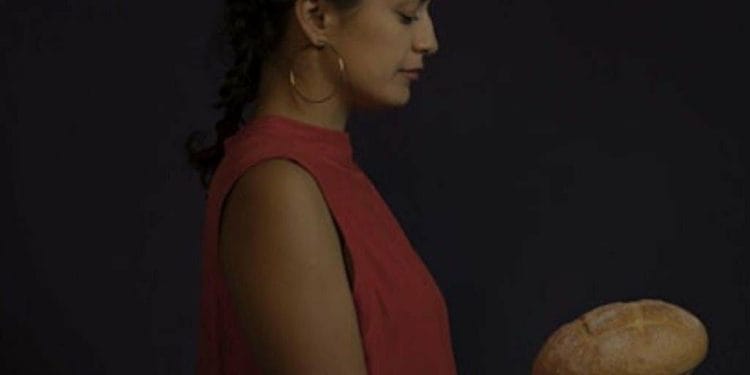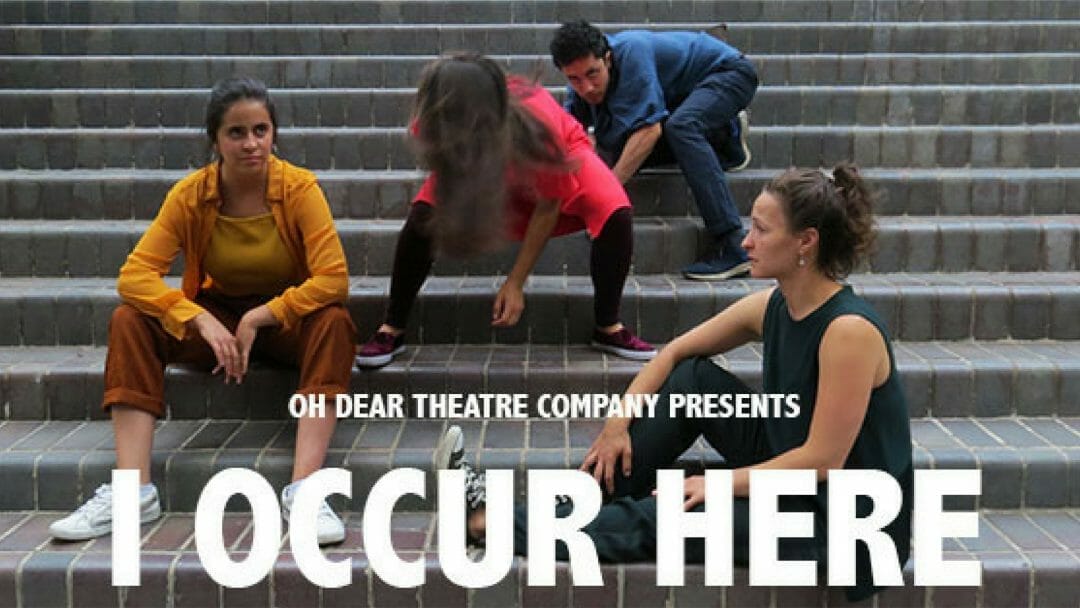 In a relaxed setting, The Two of Us explores the differences between 2 generations. Devised by Mariana Aristizábal Pardoa, Malena Arcucci, and Bryan Muñoz, from a script by Santiago Peluffo, the audience meets Mariana, as she prepares to be confronted by her grandmother, Blanca, about her life choices as a 21st Century Latin American woman, compared to Blanca’s.
In a relaxed setting, The Two of Us explores the differences between 2 generations. Devised by Mariana Aristizábal Pardoa, Malena Arcucci, and Bryan Muñoz, from a script by Santiago Peluffo, the audience meets Mariana, as she prepares to be confronted by her grandmother, Blanca, about her life choices as a 21st Century Latin American woman, compared to Blanca’s.
Entering the performance space, the audience are on an airplane. Mariana is flying home to Colombia, and starts talking to her fellow passengers, the audience. The two flight attendants move about the space stepping in and out of Mariana’s storytelling to take on the characters the audience meet. Lighting changes help indicate when Mariana is playing herself and when she is taking on the role of Blanca. Different storytelling devices come into play, such as comedy, mime, physical theatre, playing with scale, and audience interaction, that bring Mariana’s story alive.
The most interesting choices in The Two of Us are the use of props. For example, loaves of bread in different shapes, sizes, and textures are used to represent firstly Blanca’s children, and later on, all the things that Blanca does out of her duty as a wife, mother, grandmother, and neighbour, and her position in society. The use of bread represents Blanca’s staple role in the lives of those around her, and also the simplicity of her life, how Blanca knew what her life would be from an early age. Mariana’s choice of eating sourdough is just one subtle way that shows she has, and is, choosing a life different from her grandmother’s, a life that is more complicated, with more flavour. Although, Mariana admits that her grandmother is happy with the way her life has been.
The themes of childhood, adolescence, family relationships, dating, marriage and childbirth are explored. Mariana cannot believe that her grandmother has spent 75 years married to one man, and 75 years dedicated to helping others, on a straight path set out for her. Yet, for all Mariana’s talk of her own life having twists and turns and excitement, there is an underlying selfishness at Mariana not wanting to marry the partner she has dated for years, to not have children, to do what makes her happy. This is perhaps the biggest difference displayed between the two generations.
Mariana Aristizábal Pardo’s charisma, smile, and confidence should be commended, for without her talent in this way, the play would not work, as the audience would not feel comfortable at engaging in this small space. Christian From’s movement direction deserves praise too, for the seamless choreography that allows the actors to move around the tight, cross-shaped space.
Add in live music and percussion, and The Two of Us is both entertaining and thought-provoking, and truly achieves its aim to make the audience reflect on their own identity, and how the life choices they make, and their heritage, make them who they are.














